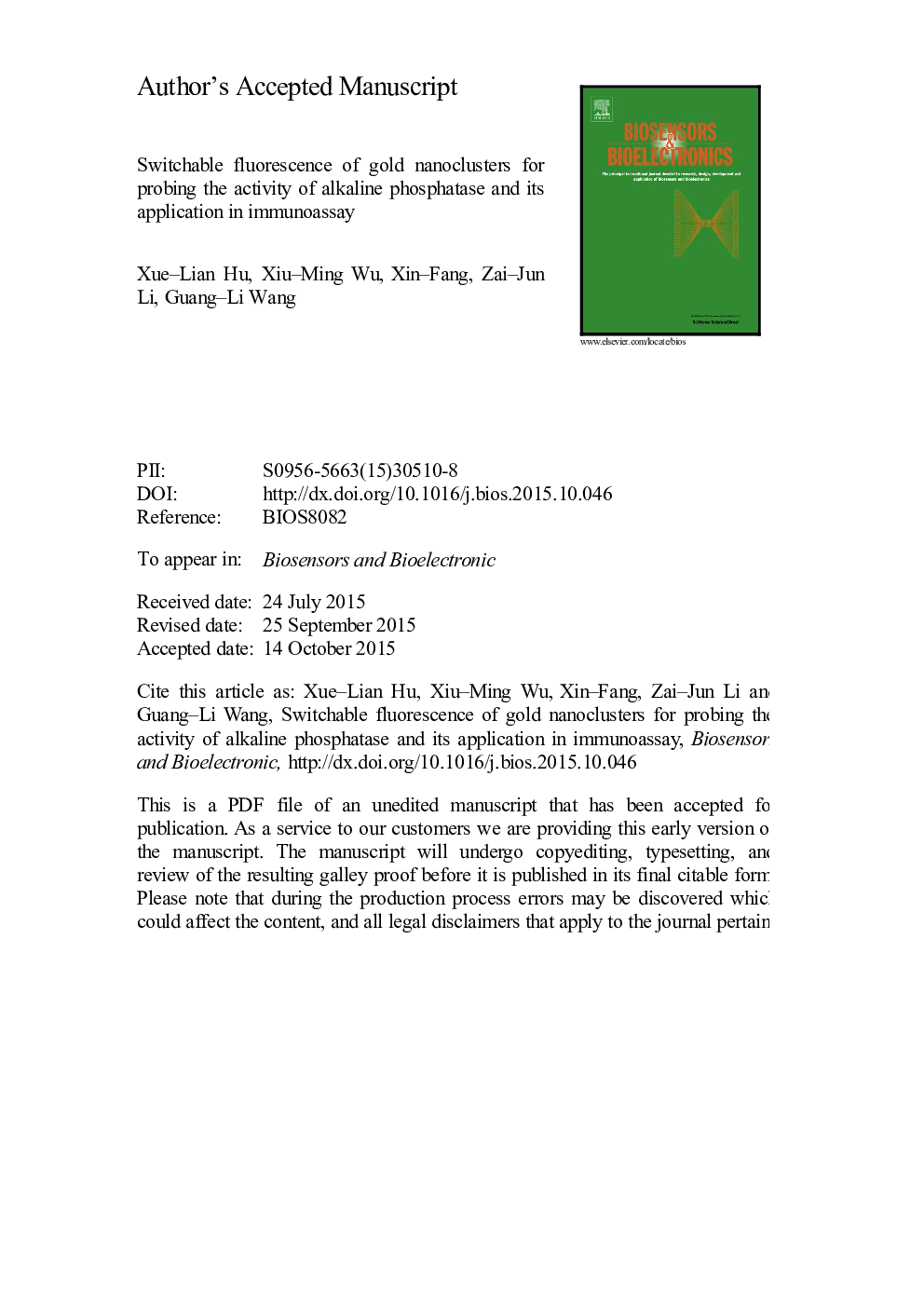| Article ID | Journal | Published Year | Pages | File Type |
|---|---|---|---|---|
| 7231701 | Biosensors and Bioelectronics | 2016 | 26 Pages |
Abstract
In this work, a novel strategy for modulating the fluorescence of gold nanoclusters (Au NCs) is developed. The fluorescence of bovine serum albumin (BSA) protected Au NCs is firstly quenched by KMnO4 and then restored by ascorbic acid (AA) due to the deterioration/restoration of the surface structure. Based on which, a novel “switch-on” fluorescent assay for probing the activity of alkaline phosphatase (ALP) is developed with a detection limit as low as 0.002Â U/L. In addition, this testing protocol is also expanded to the detection of the inhibitor of ALP and mouse IgG (as a model), the detection limits are 15Â ng/mL for the inhibitor of 2,4-Dichlorophenoxyacetic acid (2,4-DA) and 1.5Â pg/mL for mouse IgG. The present method paves a new way to develop convenient, sensitive, and selective metal NCs-based fluorescent “turn-on” probes with promising applications in versatile biosensing.
Related Topics
Physical Sciences and Engineering
Chemistry
Analytical Chemistry
Authors
Xue-Lian Hu, Xiu-Ming Wu, Xin Fang, Zai-Jun Li, Guang-Li Wang,
